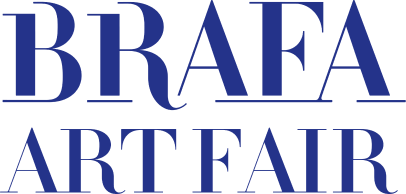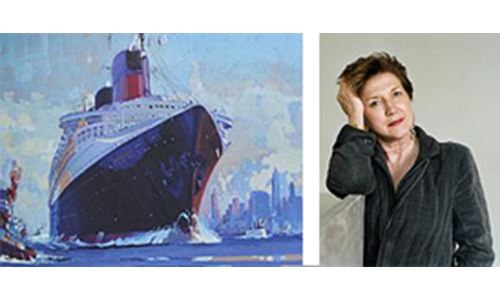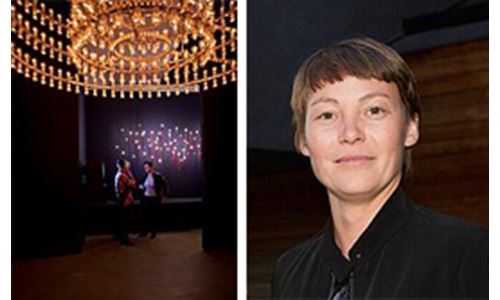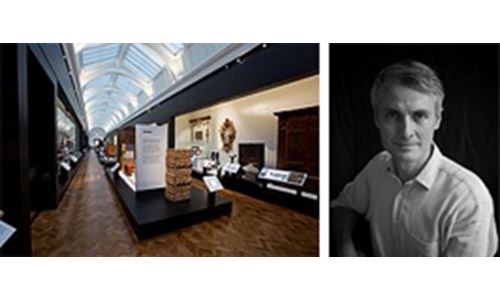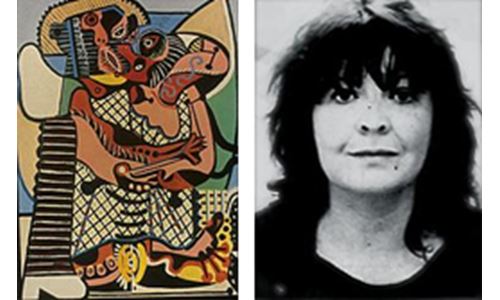ART Talks
DAS KOMPLETTE PROGRAMM HERUNTERLADEN
24/01/2015
Ocean Liners and Art Deco: an exceptional voyage
By Brigitte SABY
Interior designer and architect
Illustrated painting: Marin-Marie (1901-1987) – Le Normandie dans le port de New York
This talk traces the fascinating history of ocean liners, from the transatlantic cruises of the Roaring Twenties, to the worldwide repercussions they had on decorative arts and architecture, exploring their widespread technical, aesthetic and cultural impact. Brigitte Saby will discuss the sumptuousness and prestige of the immediately recognizable style that inspired dreams of escapism and luxury around the globe; dreams modelled on the unmistakeable refinement and quality of decoration and furnishing which so marked the history of architecture and design.
Language: FR
In partnership with: L’Eventail
Avec le soutien du Service culturel de l'Ambassade de France en Belgique
25/01/2015
History of the acquisitions of the African collections of the quai Branly Museum
By Hélène JOUBERT
Head curator Responsible for the African Heritage Collections of the Musée du quai Branly
The development of the sub-Saharan African collections at the Musée du quai Branly: tracing trends and policies in the history of acquisitions; A catalogue of works from the African collections of the Musée du quai Branly accompanies this talk that will retrace the history of acquisitions in France from 1878, when the Ethnographic Museum opened in the Trocadéro, to the present day. The Musée du quai Branly has been quick to follow in the footsteps of the Louvre, Beaubourg and the Musée d’Orsay, and now enjoys worldwide recognition for the richness and diversity of its collections, the quality of its exhibitions and the number of visitors it attracts each year. The museum’s reputation stems primarily from the geographic and cultural breadth of its collections. These have been created and enriched over the years by the individual and collective efforts of explorers, adventurers, businessmen, missionaries, soldiers, administrators, ethnologists, researchers, collectors, art-lovers, curators and art dealers, who have all contributed to the museum’s unique character, and its firm position in 19th to 21st century history.
Language : FR
In partnership with : TRIBAL ART Magazine
Avec le soutien du Service culturel de l'Ambassade de France en Belgique
26/01/2015
Passion and transmission: the collector, a key figure in the preservation of our cultural heritage
By Thomas LEYSEN, Patron of the arts and collector and
Dominique ALLARD, Director of the King Baudouin Foundation
The collector has always played a vital role in the preservation of our cultural heritage, a role that took on new proportions in the 19th century. Thomas Leysen, patron of the arts and collector, and Dominique Allard, director of the Roi Baudouin Foundation, will reflect on the distinguished art lovers who became founders of the public collections we enjoy today.
Language: FR
In partnership with: COLLECT Arts Antiques Auctions
28/01/2015
Lightopia, a history of lighting design
By JOLANTHE KUGLER
Curator at the Vitra Design Museum and curator of the exhibition Lightopia
Lightopia © Vitra Design Museum
Over the past century, electric light has revolutionized our environment like no other medium. It has transformed our cities, created new lifestyles and working conditions, and has become a catalyst of progress for industry, medicine and communication. Currently, new lighting technologies are bringing about profound changes in the domain of artificial lighting. These developments are the subject of the Vitra Design Museum’s exhibition Lightopia. This is the first comprehensive presentation of lighting design, and it features examples from the domains of art, design, architecture and many other disciplines. Curator Jolanthe Kugler will provide an insight into the making of the exhibition and elaborate on its underlying concepts and ideas.
Language: ENG
In partnership with: Residence
29/01/2015
The restoration of the Mystic Lamb: an exceptional moment to study a work of art
By Anne VAN GREVENSTEIN-KRUSE,
Professor Emeritus of conservation and restoration at the University of Amsterdam
© lukasweb
The retable of the Mystic Lamb by the Van Eyck brothers (1432) is not only extraordinary for its beauty, but also for the eventfulness of its existence, for it survived the iconoclasm of 1566, exile in Paris (1794-1816) and Berlin (1816-1920), and the salt mines of Altaussee during the Second World War. The last major restoration was carried out from 1950-1951 by Paul Coremans, founder of the Royal Institute of Art Heritage in Brussels, and remains a shining example of collaboration between art historians, scientists and restorers. The research carried out in Saint Bavo's Cathedral in 2010-2011 was the first stage in the current restoration project being carried out at the Museum of Fine Arts in Ghent.
By Livia DEPUYDT-ELBAUM
Head restorer of the Mystic Lamb at the Royal Institute of Art Heritage
For English subtitles, click the CC button located down right of the video player.
A large amount of research is being carried out to complement the conservation and restoration of the Van Eyck brothers’ Mystic Lamb, and this is therefore a wonderful moment to get to know this exceptional work of art.Treating the back of the work has enabled us to discover far more about the technical execution of the painting; not only details about the support but also information about the way the picture was created. Our approach is necessarily progressive, involving in-depth analysis, and cleaning the back of the wings and their frames, studying the pictorial layers, and using new techniques of examination and analysis, has enabled us to pinpoint large zones which have been entirely repainted in the past. The study and separation of the original pictorial layers gives us a far deeper understanding and more coherent vision of the work as a whole, helping us reveal the full splendour of the Van Eyck brothers’ work.
Languages: ENG / FR / NL
In partnership with: De Standaard/ La Libre Belgique
30/01/2015
Drawing in silver and gold: Dutch and Flemish metalpoint drawings from the 15th to the 17th
Presentation of the department of Prints and Drawings at the British Museum
By An VAN CAMP
Curator of Dutch and Flemish Drawings and Prints - Department of Prints and Drawings - British Museum
Drawing in silver and gold: Dutch and Flemish metalpoint drawings from the 15th to the the 17th
By An VAN CAMP
Curator of Dutch and Flemish Drawings and Prints - Department of Prints and Drawings - British Museum
This talk will present a selection of drawings included in the upcoming exhibition Drawing in Silver and Gold: From Leonardo to Jasper Johns, to be shown at the National Gallery of Art, Washington (May - July 2015) and the British Museum, London (September - December 2015). The international loan exhibition focuses on drawings made in metalpoint, a not very well-known drawing technique that involves the draughtsman using a metal stylus (mostly silverpoint) to draw on a sheet prepared with an abrasive ground. This technique results in very delicate and often very detailed drawings, and has produced some of the world’s most admired old master drawings. Despite being a very meticulous technique, metalpoint was widely used in the fifteenth century by Flemish Renaissance artists such as Jan van Eyck, Rogier van der Weyden and Gerard David. It continued to be used in the sixteenth century, mainly by travelling artists and portrait printmakers such as Hans Bol, Hendrick Goltzius and Jacques de Gheyn II. Rembrandt still drew in metalpoint in the 1630s but the technique stopped being used in the Netherlands at the end of the seventeenth century. This talk will provide an overview of metalpoint and its use in the Netherlands from the fifteenth to the seventeenth centuries.
Language: ENG
In partnership with: Apollo
31/01/2015
Rearranging the furniture – a new perspective at the Victoria & Albert Museum
By Nick HUMPHREY
Curator of Furniture 1400-1700, Victoria and Albert Museum, London
© The Victoria & Albert Museum
Since 2001, the V&A in London has gradually transformed its galleries of design and decorative art. The newest, devoted to Western Furniture, took a radical approach: it is the only gallery in the world to examine the techniques of construction and decoration comprehensively, from ancient developments such as intarsia to the most recent 3D printing. Nick Humphrey, co-curator of the gallery, will explain how it came about and explore some of its most fascinating contents.
Langugae: ENG
In partnership with: The Antiques Trade Gazette
01/02/2015
Picasso and eroticism: a scandalous exhibition?
By Dominique DUPUIS-LABBÉ
Head of acquisitions, restoration, conservation and research, general director of cultural heritage in the collections division, the French museum board
Illustrated artwork: Pablo Picasso : Le baiser, 1925 © Musée Picasso
Eroticism runs through Picasso’s work in which artistic creation and sexual instinct often interconnect. In his own words: ‘Art is never chaste, and should be forbidden to ignorant innocents, closed to those who are insufficiently prepared for it. Yes, art is dangerous. In other words, if it’s chaste, it’s not art.’ 1
From the series of drawings devoted to brothels dating from 1899 and 1900, to the sepulchral embraces of the 1970s, Picasso never stopped exploring the sexual tension between men and women, playing with the boundary between eroticism and pornography and experimenting with representations of the body.
Dominique Dupuis-Labbé will explore the subject through Picasso’s key works, drawing from the creation of the emblematic exhibition Picasso érotique, presented at the Galerie Nationale du Jeu de Paume, Paris, in 2001.
1 Picasso quoted by Antonina Vallentin, Picasso, Paris, Albin Michel, 1957, p.273
Language: FR
In partnership with: Juliette & Victor
Avec le soutien du Service culturel de l’Ambassade de France en Belgique
Part I: La construction de l'exposition
Part II: L'Erotisme dans l'oeuvre de Picasso
.

